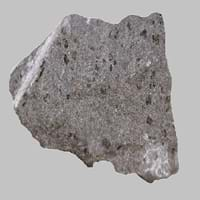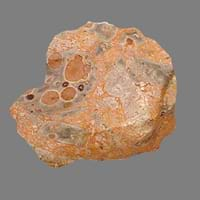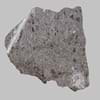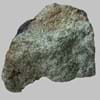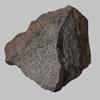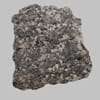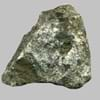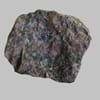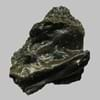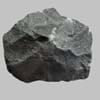Tephrite and Felsite
Definition
Definition
Tephrite is an aphanitic to porphyritic textured, volcanic igneous rock
Felsite is a very fine grained volcanic rock that may or may not contain larger crystals and light colored rock that typically requires petrographic examination or chemical analysis for more precise definition
History
Origin
Germany
Unknown
Discoverer
Van Tooren
Unknown
Etymology
From Greek tephra, ashes from Indo-European base, to burn
From English feldspar and -ite
Class
Igneous Rocks
Igneous Rocks
Sub-Class
Durable Rock, Hard Rock
Durable Rock, Medium Hardness Rock
Family
Group
Volcanic
Volcanic
Other Categories
Coarse Grained Rock, Fine Grained Rock, Medium Grained Rock, Opaque Rock
Fine Grained Rock, Opaque Rock
Texture
Texture
Aphanitic to Porphyritic
Arborescent Patterned, Vitreous
Color
Black, Brown, Colourless, Green, Grey, White
Black, Blue, Brown, Green, Orange, Red, Tan, Yellow
Maintenance
Less
Less
Durability
Durable
Durable
Water Resistant
Yes
Yes
Scratch Resistant
Yes
Yes
Stain Resistant
No
No
Wind Resistant
Yes
Yes
Acid Resistant
No
No
Appearance
Vesicular
Layered, Banded, Veined and Shiny
Uses
Architecture
Interior Uses
Decorative Aggregates, Flooring, Homes, Interior Decoration
Decorative Aggregates, Flooring, Interior Decoration
Exterior Uses
As Building Stone, As Facing Stone, Garden Decoration, Office Buildings
Paving Stone, Garden Decoration
Other Architectural Uses
Curbing
Curbing
Industry
Construction Industry
Landscaping
Arrowheads, Cutting Tool, Knives, Scrapers, Spear Points
Medical Industry
Not Yet Used
Surgery
Antiquity Uses
Artifacts, Sculpture
Artifacts
Other Uses
Commercial Uses
Production of Lime, Soil Conditioner
Mirror, Jewelry
Types
Types
Not Available
Not Available
Features
Host Rock for Lead
Available in Lots of Colors and Patterns, Clasts are smooth to touch, Splintery, Very fine grained rock
Archaeological Significance
Monuments
Not Yet Used
Not Yet Used
Famous Monuments
Not Applicable
Not Applicable
Sculpture
Used
Not Yet Used
Famous Sculptures
Data Not Available
Not Applicable
Pictographs
Not Used
Used
Petroglyphs
Not Used
Used
Figurines
Used
Not Yet Used
Fossils
Absent
Absent
Formation
Formation
Tephrite is a fine-grained, hard rock which is a type of metasomatite, essentially altered basalt. It forms with or without crystallization, either below the surface as intrusive rocks or on the surface as extrusive rocks.
Felsite is a fine-grained, hard rock which is a type of metasomatite, essentially altered basalt. It forms with or without crystallization, either below the surface as intrusive rocks or on the surface as extrusive rocks.
Composition
Mineral Content
Alkali feldspar, Nepheline, Plagioclase, Pyroxene
Feldspar, Iron Oxides
Compound Content
CaO, Carbon Dioxide, MgO, Silicon Dioxide
Aluminium Oxide, CaO, Iron(III) Oxide, FeO, Potassium Oxide, MgO, MnO, Sodium Oxide, Phosphorus Pentoxide, Silicon Dioxide, Titanium Dioxide
Transformation
Metamorphism
Yes
Yes
Types of Metamorphism
Cataclastic Metamorphism, Contact Metamorphism, Impact Metamorphism, Regional Metamorphism
Burial Metamorphism, Contact Metamorphism, Impact Metamorphism, Regional Metamorphism
Weathering
Yes
Yes
Types of Weathering
Biological Weathering, Chemical Weathering, Mechanical Weathering
Biological Weathering, Chemical Weathering, Mechanical Weathering
Erosion
Yes
Yes
Types of Erosion
Chemical Erosion, Coastal Erosion, Glacier Erosion, Sea Erosion, Water Erosion
Chemical Erosion, Glacier Erosion, Water Erosion
Properties
Physical Properties
Hardness
6.5
5-5.5
Grain Size
Medium to Fine Coarse Grained
Fine Grained
Fracture
Uneven
Conchoidal
Streak
Bluish Black
White
Porosity
Very Less Porous
Very Less Porous
Luster
Subvitreous to Dull
Vitreous
Compressive Strength
90.00 N/mm2
22
0.15 N/mm2
33
Cleavage
Crenulation and Pervasive
Non-Existent
Toughness
2.4
Not Available
Specific Gravity
2.86
2.6-2.7
Transparency
Opaque
Translucent
Density
2.8-2.9 g/cm3
2.6 g/cm3
Thermal Properties
Specific Heat Capacity
0.92 kJ/Kg K
10
0.92 kJ/Kg K
10
Resistance
Heat Resistant, Impact Resistant
Heat Resistant, Impact Resistant
Reserves
Deposits in Eastern Continents
Asia
Not Yet Found
Afghanistan, Indonesia, Japan, Russia
Africa
Namibia, Uganda
Kenya
Europe
Germany, Hungary, Italy, Portugal, Spain
Greece, Hungary, Iceland, Italy, Turkey
Others
Not Yet Found
Not Yet Found
Deposits in Western Continents
North America
USA
Canada, Mexico, USA
South America
Not Yet Found
Argentina, Chile, Ecuador, Peru
Deposits in Oceania Continent
Australia
New Zealand, Western Australia
New Zealand
All about Tephrite and Felsite Properties
Know all about Tephrite and Felsite properties here. All properties of rocks are important as they define the type of rock and its application. Tephrite and Felsite belong to Igneous Rocks.Texture of Tephrite is Aphanitic to Porphyritic whereas that of Felsite is Arborescent Patterned, Vitreous. Tephrite appears Vesicular and Felsite appears Layered, Banded, Veined and Shiny. The luster of Tephrite is subvitreous to dull while that of Felsite is vitreous. Tephrite is available in black, brown, colourless, green, grey, white colors whereas Felsite is available in black, blue, brown, green, orange, red, tan, yellow colors. The commercial uses of Tephrite are production of lime, soil conditioner and that of Felsite are mirror, jewelry.
|
||
|
||
|
